How to fish Sycamore Run on the Welsh Dee at Llangollen
Table of Contents
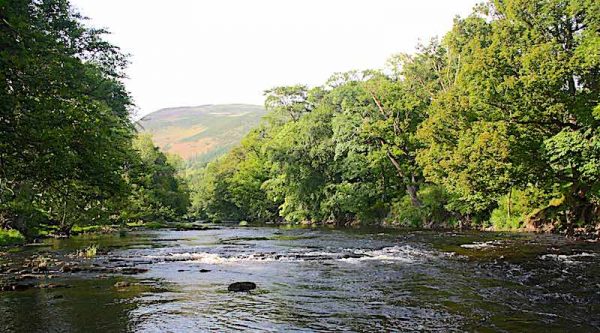
Sycamore Run Introduction
I’ve produced this fly fishing guide to share my knowledge on how to fish Sycamore Run, which is part of Llangollen-Maelor’s middle beat of Welsh Dee.
Sycamore Run is the stretch of water that connects the Channel Pool to the Pipe Pool. It can be accessed from both banks but is normally just fished from the right bank, as anglers fish the way upriver.
Essentially, the fishable section is a channel close to the right bank that has been cut into the bedrock, which connects a few larger pockets of fishable water.
Compared to the rest of the middle beat, it is a challenging section of river fish with the fly because the rocky, bank is lined with overhanging trees, and the flow through the channel is turbulent.
However, when the river is low (ca. 0.5m Corwen gauge) during the summer months it’s definitely worth making the effort to fish Sycamore Run because it holds some sizeable grayling, trout, and sea trout during July and August.
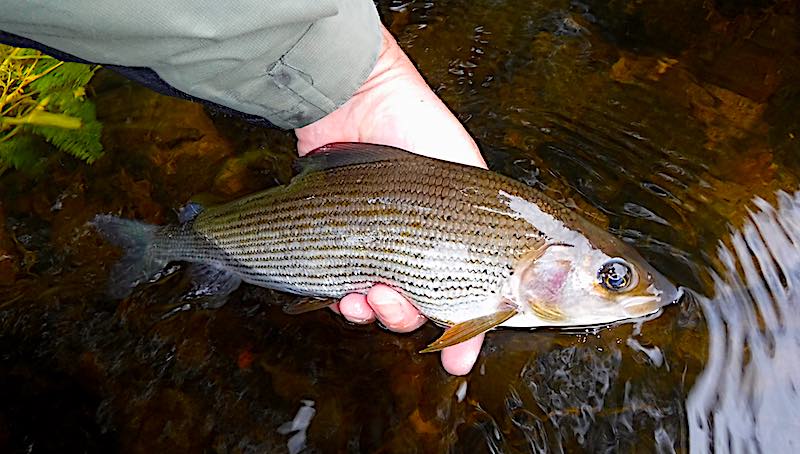
Fly Fishing for trout & grayling:
The river flows south through Sycamore Run but is shaded from the summer sun by the overhanging canopy of Sycamore trees. Making it a great pool for fly fishing on bright, sunny days when the trees are in leaf.
The pool can be accessed from both banks but is best fished from the right bank.
I only fish Sycamore Run when the river level is at its summer level because above this level the river flow is too quick to fish it safely.
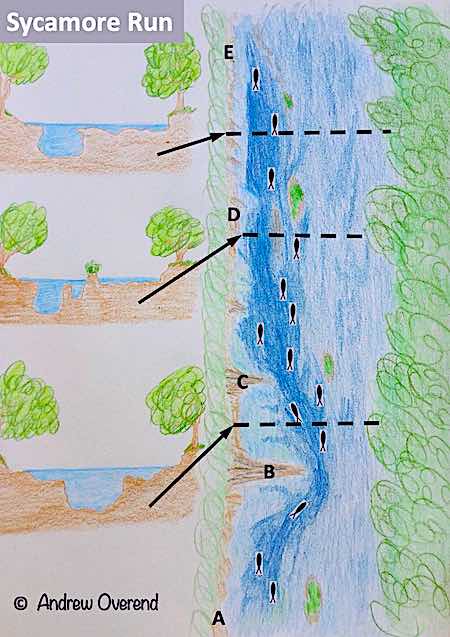
In this sketch of the Sycamore Run, I’ve highlighted where I usually catch trout and grayling when the river is at its summer level.
Don’t wade in Sycamore Run because the rocky riverbed is slippy and suddenly drops away into a deep channel.
Also, it can be fished from the bank because most of the fish are located in the channel close to the bank.
It is best to tackle this pool by fishing upriver from points (A) to (E) because trout and grayling lie close to the right bank and thus easily spooked.
There are a few approaches that can be taken to fish the Sycamore Run.
However, for newcomers it’s best to fish from the bank with the dry fly, starting at point (A) and fishing up to point (E).
Dry Fly fishing:
For newcomers, the best approaches to fishing Sycamore Run are with a single dry fly or a small nymph suspended 3-4ft under a buoyant dry fly acting as an indicator (Kling & DInk method).
It is best to fish up through the run from point (A) to (E), casting to rising fish or searching the foam line and the slack water pockets.
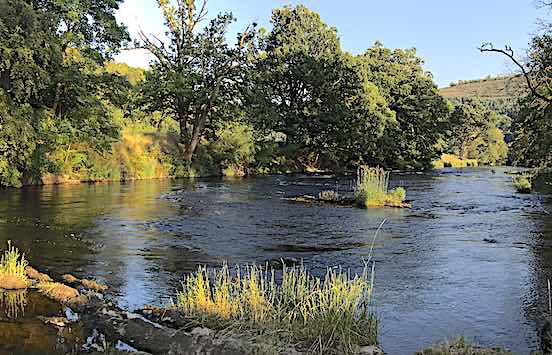
In zone A to B, you will often find a few trout and/or grayling feeding in the foam lane in the main channel. Even if there are is no visible sign of fish, it is still worth prospecting this area with the dry fly. By covering the areas of slacker water on either side of the main channel and any back-eddies.
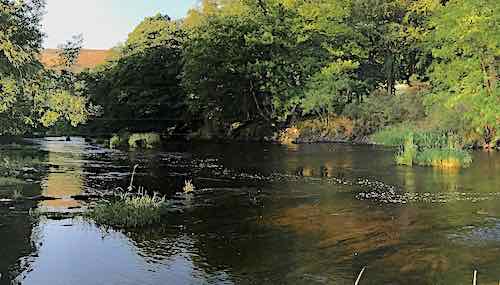
In the next zone (B to C), fish lie out of the main flow in small pockets that have been cut into the rock on either of the channel walls. When fishing from the rock outcrop (B) make sure you keep a low profile to avoid spooking the fish.
In the absence of rising fish, casting the fly into the foam line is the best approach.
In zone C to D, trout are normally lie in the slacker water behind the large submerged rock and a few snags that get stuck in the channel there.
Finally, in the zone (D to E), fish lie on the far side of the channel close to the bottom. Occasionally they will rise to the dry fly fished on the far side of the foam line.
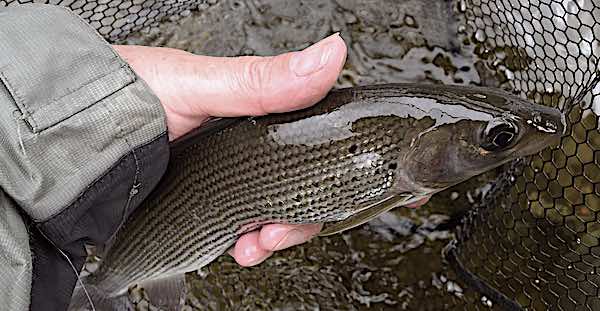
Euro/Czech nymph fishing:
If dry fly fishing fails to catch any trout or grayling in Sycamore Run, then for the more adventurous / experienced fly anglers, fishing the main channel with a team of nymphs can yield some good fish.
This approach is not for the faint-hearted because wading out onto the rock ledge is very hazardous. The rocks get coated in fine silt and slim making them extremely slippy.
To fish this pool with nymphs it is best to start at point (A) and fish up to (E), fishing the nymphs as close to the bottom of the main channel as possible.
The channel is full of snags so be prepared to lose a few nymphs. However, it’s good fun when you hook fish lying deep in the channel.
How my approach changes with the season:
Fly fishing in March:
The brown trout fishing season on the Welsh Dee starts on the 3rd of March. However, the weather in March is often more like winter than spring.
On mild days, hatches of large dark olives and March Browns usually start around 11 am and you will often spot trout picking them off as they drift through this pool. During these hatches, my approach is to target the rising fish with the dry fly (large dark olive or March Brown pattern).
For more information on the fly selection for fishing during March check out the following article:
Fly fishing in April:
Once April arrives, the weather usually starts to warm up and hatches of Large Dark Olives, March Brown, Grammon and other olives become more prevalent from mid-morning to mid-afternoon. Hence, providing more opportunities to catch brown trout on the dry fly, by matching the hatch.
For more information on the fly selection for fishing during April is covered in the following post.
Fly fishing in May:
As the weather warms and dries up during May, fly hatches become prolific and brown trout become eager to fatten up on the emerging fly life. Examples of flies you will see include:
Upwinged flies:
- Blue-winged olive
- Large dark olive
- Medium olive
- Iron Blue Dun
- Pale Watery Dun
- Olive Upright
- Yellow May Dun
Sedges:
- Black sedge
- Grannaom
- Cinnamon sedge
- Medium sedge
Others:
- Hawthorn fly
- Alderfly
- Large stonefly
- Midges / Gnats
As a result of all the fly-life, May is when dry-fly and upstream wet-fly fishing produce the best catch results, when you have identified which flies the trout are taking.
Even on sunny days, the fishing can be good from morning to dusk, but the best fishing is often in the morning and evening.
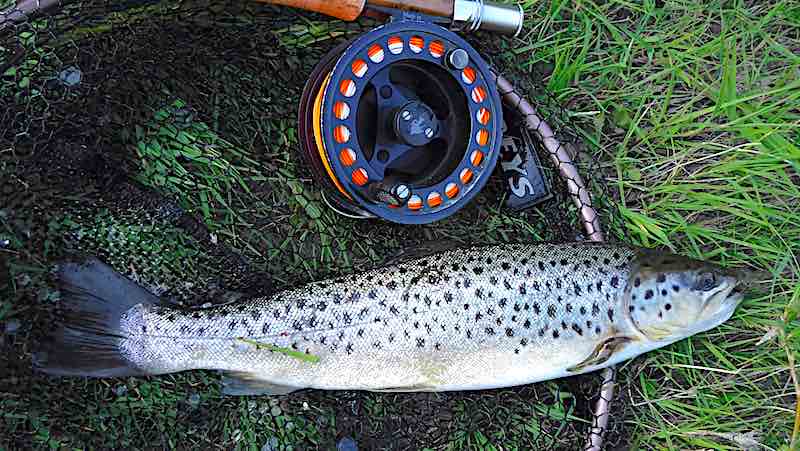
Fly fishing from June to September:
When the river is low during the summer months, fast, oxygenated water flowing through Sycamore Run is a good place to fish. On sunny days, this section of the river will continue to yield trout and grayling throughout the day, but the best fishing is early in the morning and after 5 pm.
More information on the fly selection for summer is covered in the following posts.
Fly fishing in October:
My attention turns to grayling fly fishing from October to the end of February on the Welsh Dee.
During autumn and winter, river conditions often dominate my grayling fishing activities and I will only fish this pool if the river is running clear and the level is below 0.55m (Corwen gauge).
During October on the Welsh Dee, fly hatches are still common on most days. The flies you are likely to see hatching include:
- Iron Blue Dun
- Pale Watery Dun
- Egg-laying Stoneflies
- Midges
October mornings tend to be cool and fly hatches don’t usually start until mid-morning and usually wait until then to fish Sycamore Run, with the dry fly or Klink & Dink.
Ideally, it’s best to try and identify the flies that are being taken and tie on a suitable imitation.
If that is not possible, I usually start with a CDC olive emerger pattern that has served me well, and if that doesn’t work I start working through my fly box. However, it’s rare not to catch a grayling on one of the three following patterns:
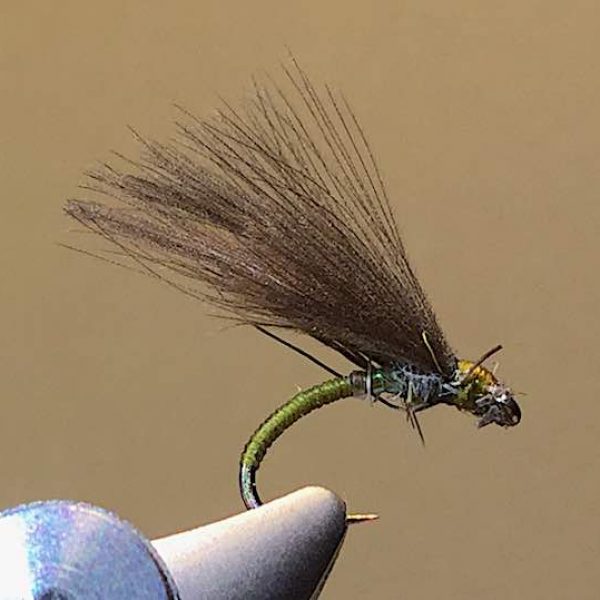
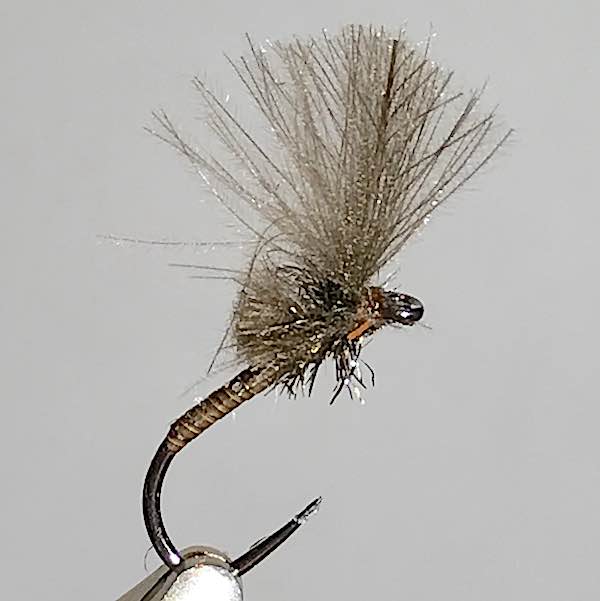

On rare occasions it’s not possible to tempt grayling with either of the above approaches, it is necessary to switch to fishing nymphs close to the riverbed.
Check out the link below for additional reading on flies for October:
Fly fishing from November to February:
The clocks go back at the end of October and the days get increasingly shorter during November. At this time of year, the river is often too high to fish Sycamore Run.
Therefore, with limited daylight hours, I often walk passed it to fish more productive pools where grayling have started to shoal.
Check out the following articles for information on grayling flies for winter :
How to get to Sycamore Run:
From Llangollen take the A5 to Crown then just after the junction with the B5103 by Berwyn Station take the next right and follow the lane for about 500 meters until you reach the lay-by on the left next to the railway tunnel.
Walking down the lane and go over the stile on your right. Then head upriver, over the next two styles and continue upriver about 100m to where the bank becomes heavily tree-lined. This is the start of Sycamore Run. A map of this pool can be found on the Llangollen-Maelor Angling website.
Fishing, like most outdoor sports, is not without its hazards. Therefore, YOU MUST DO YOUR OWN RISK ASSESSMENT before starting to fish. Especially if you decide to wade and/or fish at night. In addition, you must follow the Llangollen-Maelor Club Rules when accessing and fishing this water.